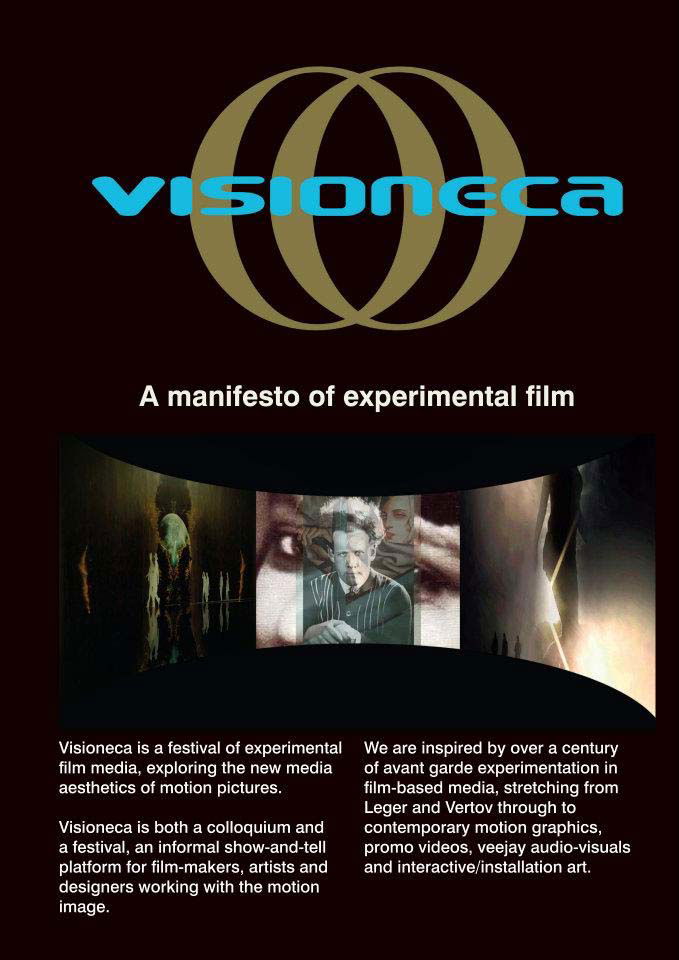
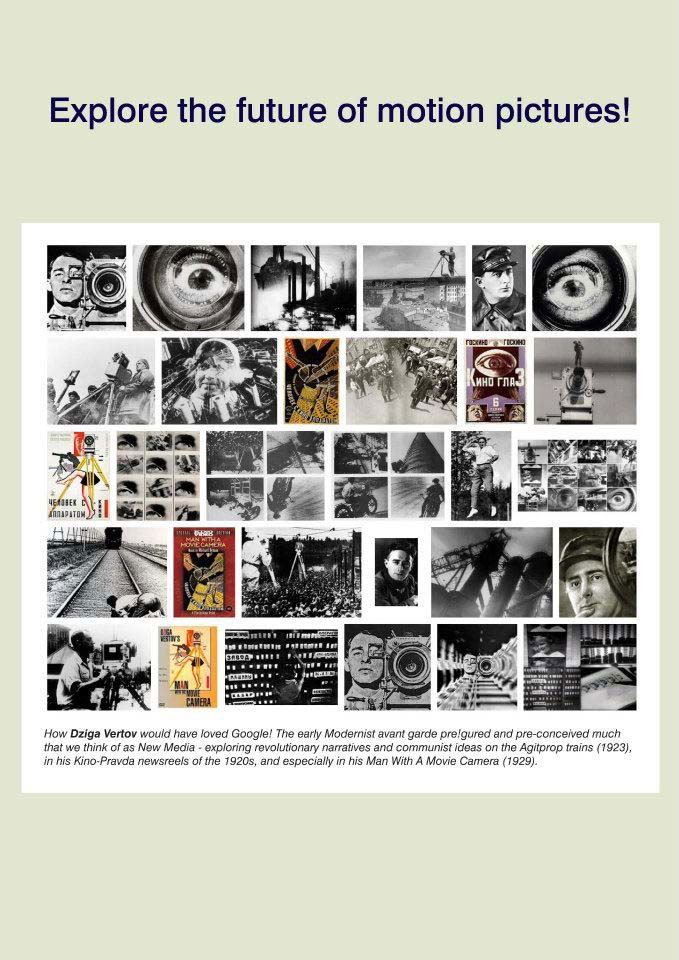
Visioneca Festival of Experimental Film was an idea Paul and I had for a local West Wight experimental film festival back in 2010. Paul had been showing short-films at his regular film evenings at cafes and bars across the Island, and he and I had done some talks on experimental film at Quay Arts. I had semi-retired from lecturing at Arts University Bournemouth (AUB) on Film and Digital Media, so we were well-placed to devise an interesting festival locally. Importantly we wanted local young creatives to come too - we did slide-intros at all the major Island secondary schools - public and private - as well as getting some of my colleagues from AUB and London College of Communication - where I had recently been a Research Fellow, teaching on the MA in Interactive Media with Alan Seckers. We wanted a conference-style festival and invited Sandra Gaudenzi and Judith Ashton from the iDocs (interactive documentary) Festival in Bristol, Liam Birtles from BU and AUB, and some promising students from the Digital Media course at AUB to show their work and help Paul and I introduce Experimental Film to local afficionados and cineastes. And Peter Purg, my colleague from Slovenia who ran multimedia courses at University of Nova Gorica in Italy came over too. Peter Greenaway (of The Draftsman's Contract and The Tulse Luper Suitcases had offered his support in Visioneca, but could not intend - he gave a great talk at
https://www.youtube.com/watch?v=qZQTmrp261E
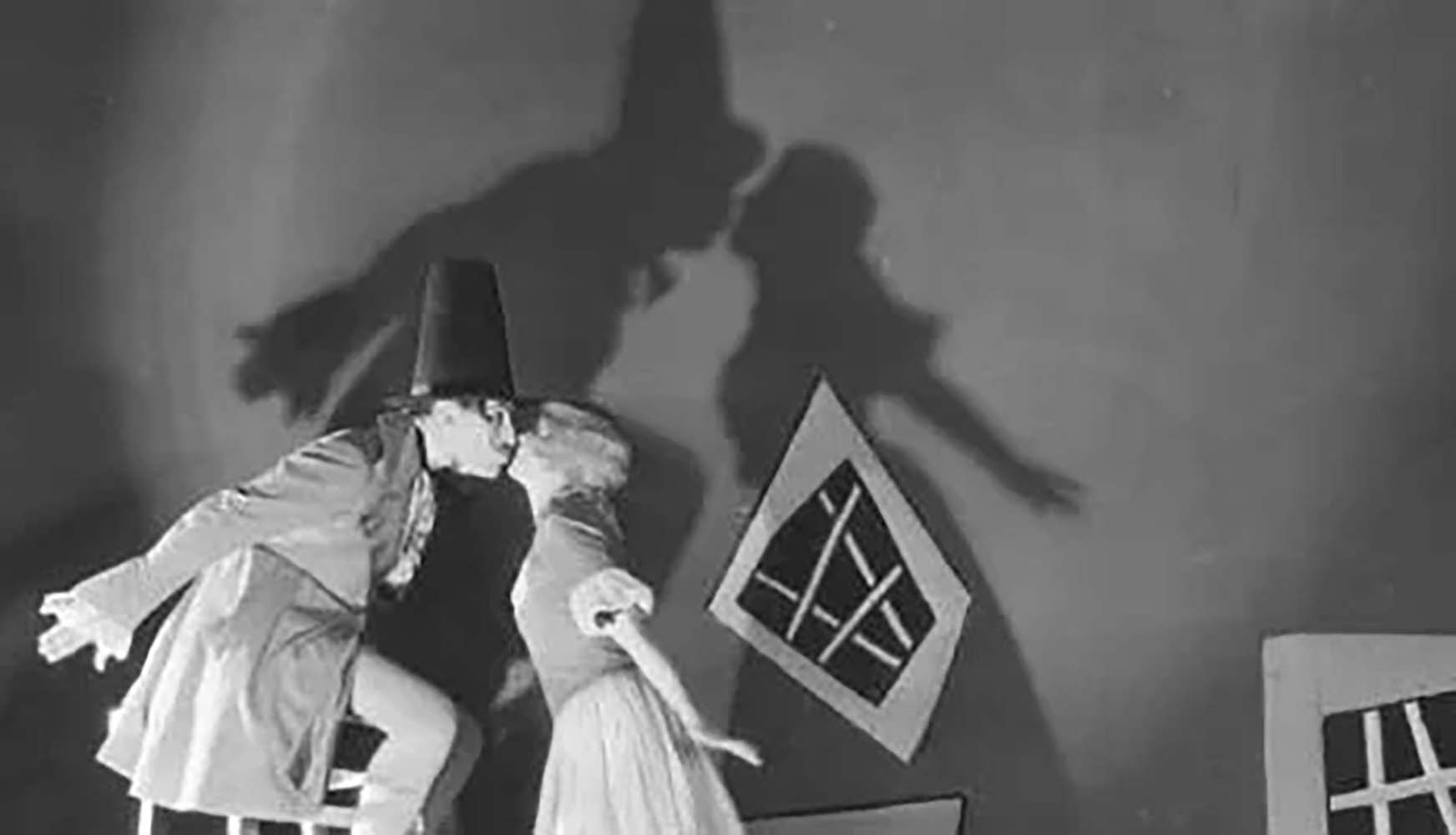
(1928) I like to include the viewing of early experimental short films, and one of my favourites is The Love of Zero, by the American director and innovator Robert Florey. The range of innovation in this short film is staggering - you can view it here:
https://www.youtube.com/watch?v=psaV9KKCACU&t=15s

Fernand Leger + Dudley Murphy: Ballet Mecanique 1924 - with George Antheil's fabulous music added later. Kiki de Montparnasse is one of the 'stars'.
https://www.youtube.com/watch?v=TgtRw4DE124

Stenberg bros: poster for Man With AS Movie Camera 1929
Dziga Vertov: Man With A Movie Camera, with its fast-cutting, panoptic scenes of modern Russian cities, intercut with big close-up sequences of the people - the 'new Russians' and their Soviets, mixed Western modernity with the new technologies of film radio, PA systems, aerial photography and modern weaponry - and inspired the best Russian designers of this time, as you can see in two versions of their posters for Vertov's film.

The Stenberg Brothers: Georgii and Vladimir - young Soviet dudes and ground- breaking constructivist designers. Film - and the Soviet focus on design, mass-communication, and mixing cyrillic and European typefaces with adventurous stills photography, photo-montage and strong, eye-catching graphics - set the style for Revolutionary Communism until Stalin's takeover of power. Here the Stenbergs give us vertiginous perspectives, the spiral, immersive cyrilliac typography and a disjointed photo-montage to give an impression of the impact of the Man With A Movie Camera...
Their designs shown here, indicate what a wide-ranging cultural event was taking place in Russia in the decade or so 1917-1929.In graphics, in fashion, in film, photography, music and composition, in dance, in ballet, in poetry, in art-education, in radio, and telecommunications - all was being explored...
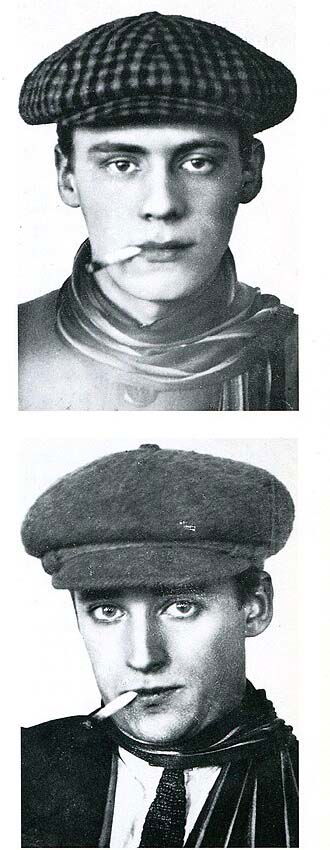

Shoot forward to 1981 and, on the cusp of the digital-video revolution, we have the Polish-born Zbigniew Rybczyński showing what 30-odd different 'layers' of digital might look like - and doing it all with 35 mm film - and hundreds of individually cut mattes. This is Rybczyński's remarkable Tango of 1981:
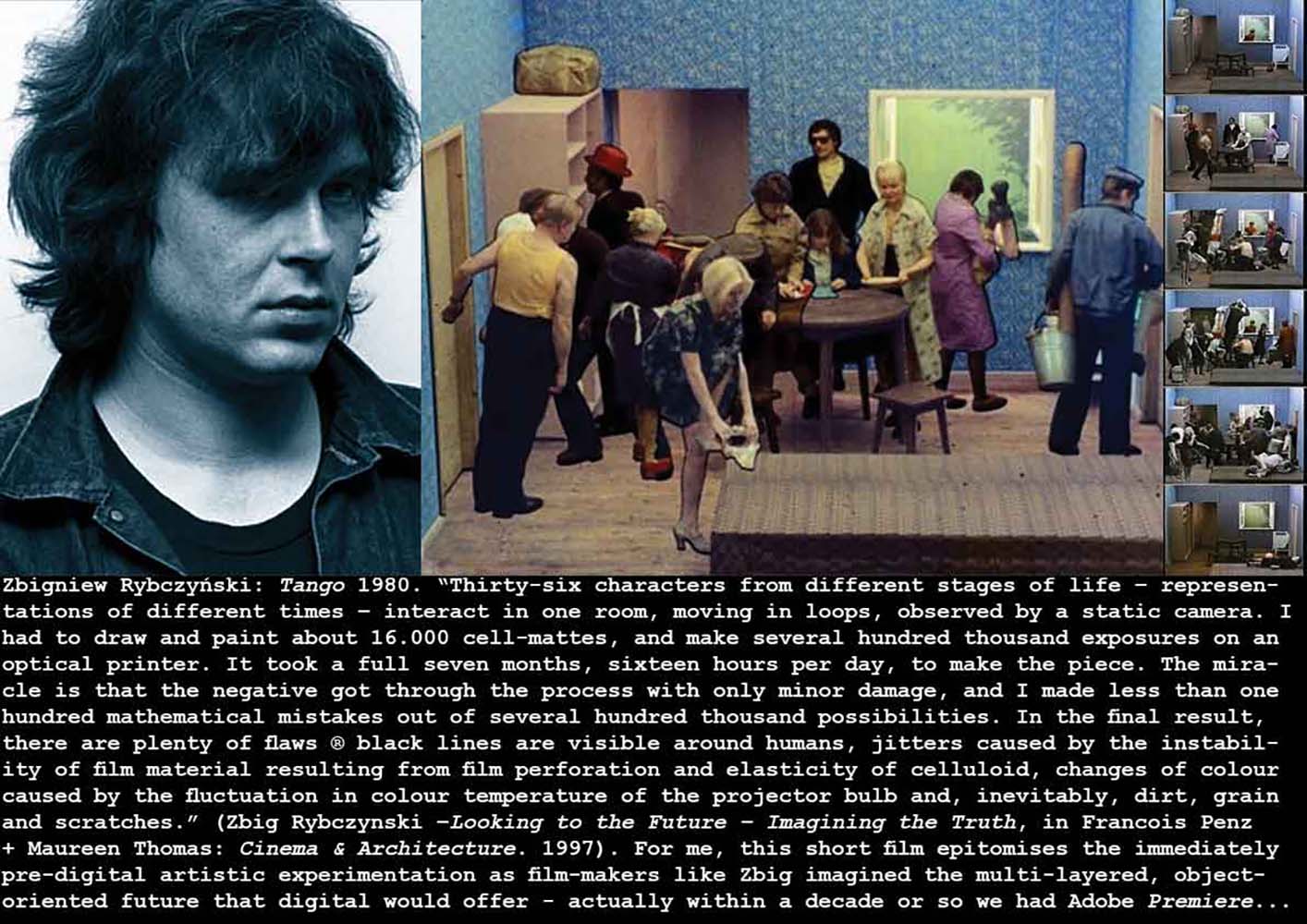
https://www.youtube.com/watch?v=z27z7oLQb3o
or
https://www.youtube.com/watch?v=4A9FjZkD94k&t=28s
Fast-fwd another decade and we have his remarkable exercises in digital video in The Orchestra - and the masterpiece of the final sequence::
https://www.youtube.com/watch?v=ihqdvT-iaC0
Then onwards a couple of decades to the remarkable team of Russian artists, AES+F and their Last Riot shown at the 2007 Venice Biennale:

https://www.youtube.com/watch?v=5YE4zinYKQk
AES+F: The Last Riot 2007
This was an immersive, wrap-around 3-projector panorama linking the AES+F mixed media narrative, fuzing high-res 'fashion photography' referencing Oliviero TOSCANI'S Benneton-style photography, dynamic computer-graphics sequences, and a stuttering slow iteration of repeat loops of these animations - altogether a staggering attempt to materialise the zeitgeist. I loved it. But also look at what they've done recently:
AES+F Turandot 2070 2019
https://www.youtube.com/watch?v=5YE4zinYKQk&t=2s
Watch this NOW - AES+F has been formative in exploring the future of hybrid immersive media experiences...
Paul Windridge recent paintings: Paul describes them as: "The paintings are vivid compositions of original characters from period comic books, alongside occasional other ‘found’ and stylised ‘real-life’ depictions. The juxtapositions of characters in the paintings never appeared in any of the original comic books.
The resulting images explore relationships, communication, conversation, debate, negotiation, interchange, interplay, exchange, attitude, and reactions to implied situations."
(top) Interactions-Series-3 2022
(next) Hey! 2022
(bottom:) Really! 2022

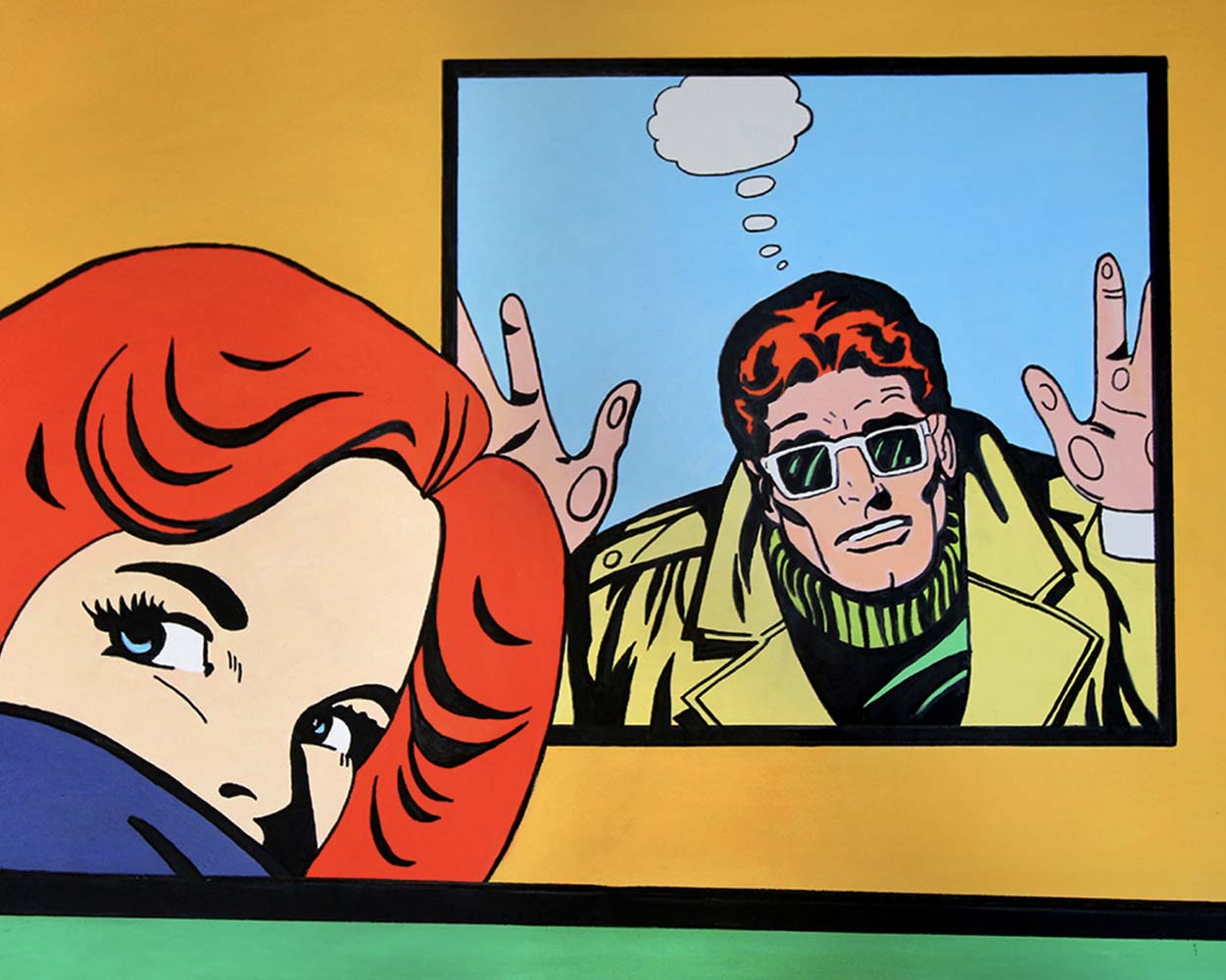

Beyond the Sixties interpretations of Roy Lichtenstein, Windridge's comic images are not simply enlarged copies - they have their own narrative presence - like a still in a movie that's still continuing - Paul's talents, as an unusually aphantasic artist, depend on the illustration and invention of these virtual narratives.